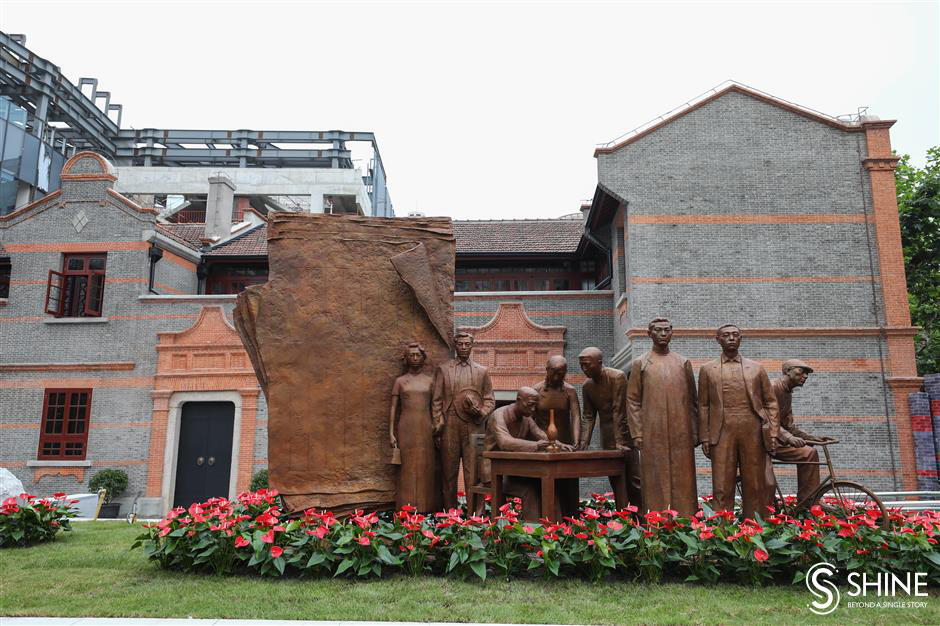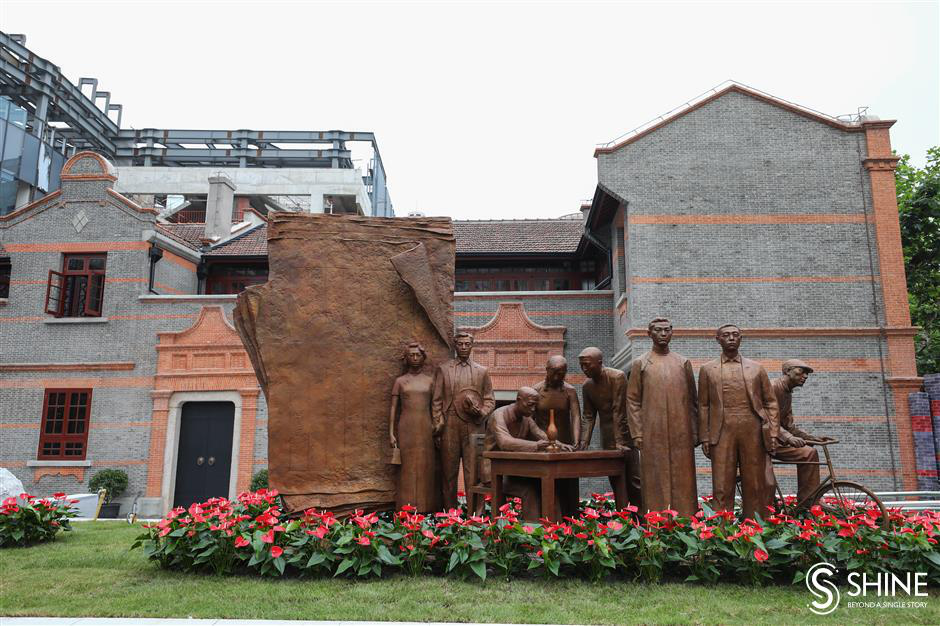
A set of sculptures featuring Party members making their contribution to the revolutionary cause in front of Hengjili.
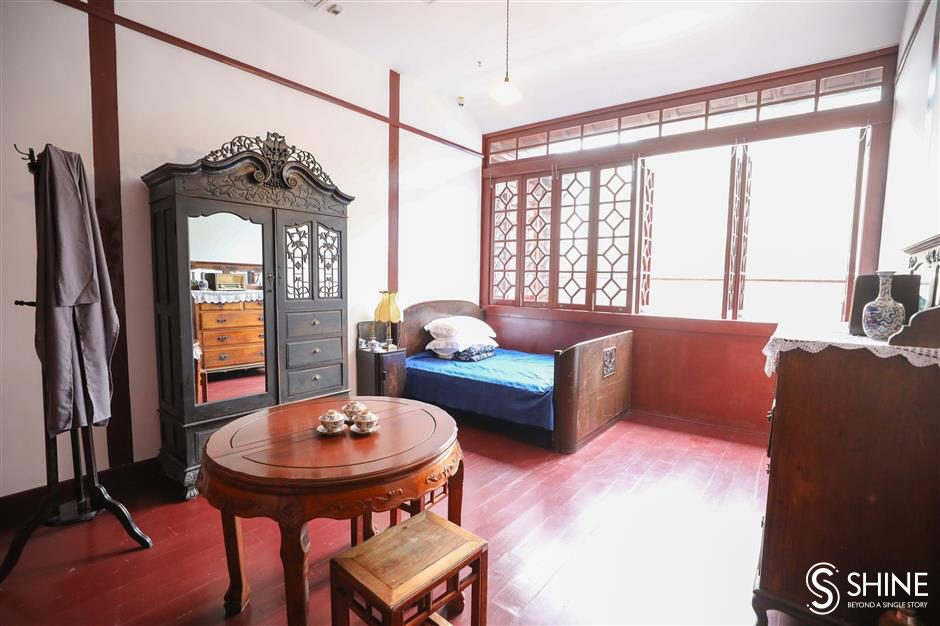
The office on the second floor is decorated as a single room, furnished with bed, closet and table.
On an unassuming street corner stands an inconspicuous gray-and red-brick building, but its past was riddled with "red" secrets.
The two-floor building, at the current No 10, Lane 673 on Jiangning Road, was once hidden away in a typical shikumen (stone-gate) neighborhood called Hengjili about a century ago. There, proletarian revolutionists risked their lives in clandestine activities.
After a temporary move to Wuhan, Hubei Province, the Central Committee of the Communist Party of China moved back to Shanghai in September 1927. Finding it unsafe for individuals to keep documents, Premier Zhou Enlai suggested finding a place to serve as a secretariat.
At his request, Zhang Weiyi rented a two-floor building at 1141 Hengjili. Until mid-1931, Party leaders came to read and review important documents, as well as attend secret meetings. There, everyone lived a double life to cover up their revolutionary work.
Initially, Zhang lived under a false identity as a woodware businessman with a "son" and a "daughter-in-law."
In early 1931, Zhang Ji'en, under the pseudonym of Huang Jici, took over the job. He lived with his wife, Zhang Yuexia, on the first floor. Qiu Aizhen, also known as Zhou Xiuqing, pretended to be their servant and lived in the tingzijian, or garret. The office on the second floor was decorated as a single room, furnished with bed, closet and table.
On June 23, 1931, police raided the house, but found nothing important, thanks to Premier Zhou's foresight. As the building was piled with documents, Zhou had asked Zhang Weiyi to transfer the stash to another place for safety by the end of 1930. Since then, documents were stored and read in two separate places. However, the couple was still arrested. Zhang Ji'en was sentenced to five years in jail on accusation of "covering up the CPC," while his wife was soon released.
Deng Yingchao, wife of Premier Zhou, recalled that she had come by appointment to have dinner, but a missing flowerpot on the garret's windowsill suggested that the spot had been exposed, and she immediately visited another comrade.
As the years passed, the site gradually became forgotten about. In 1982, Zhang Ji'en and coworker Huang Jieran were asked to identify the site. They visited several similar buildings in the surrounding area. When Huang climbed the stairs in one building, he touched the handrail and said: "Yes. I could feel it. It looked and felt the same as in the past." Later, Zhang also confirmed it was exactly the place they were looking for.
In December 2017, the site was granted "under protection" status. It opened to the public as a new "red" museum on June 10.
The building has been restored to its original appearance of around a century ago. The rooms where the early Party members lived have also been restored to its original layout.
Since February 2018, workers have been visiting Party history experts and collecting exhibits from Beijing, Taiwan to Russia.
The exhibition features more than 100 texts and photos, including copies of classified documents such as argots and code words used by Party members to deliver secret information.
Highlights of the exhibits also include a dudou, a traditional Chinese form of bodice, sewn by Zhang Yuexia for her daughter when she was in detention, and furniture used by the couple.
The site opens from 9am to 4:30pm, from Tuesday to Sunday
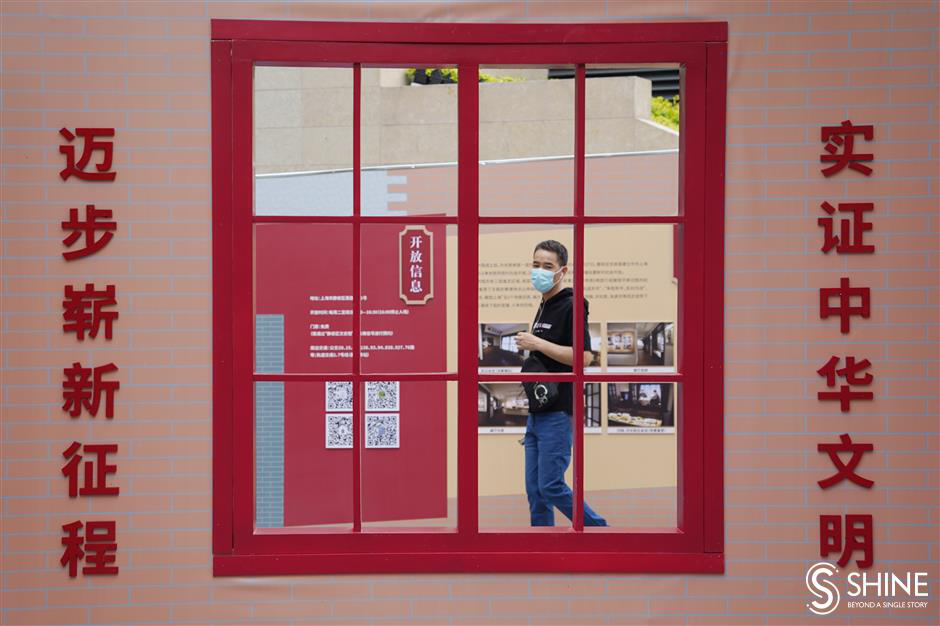
Chairman's former residence
An exhibition displaying nine "red" sites of Jing'an District has opened at Jing'an Temple Square. The exhibition tells the history and renovation work of nine "red" sites, including the former Shanghai residence of Mao Zedong and the Memorial of the Second National Congress of the Communist Party of China. As well as texts and photos, visitors can also scan QR codes to have immersive virtual tours. Workers from Shanghai Jing'an Properties Co have created a stone gate the same size and style as a historical one at the Memorial of the Second National Congress. Wu Gongbao from the company, also a veteran renovator of old buildings, said: "We hope more people can see what the museum looked like about a century ago." The exhibition will run to July 12.
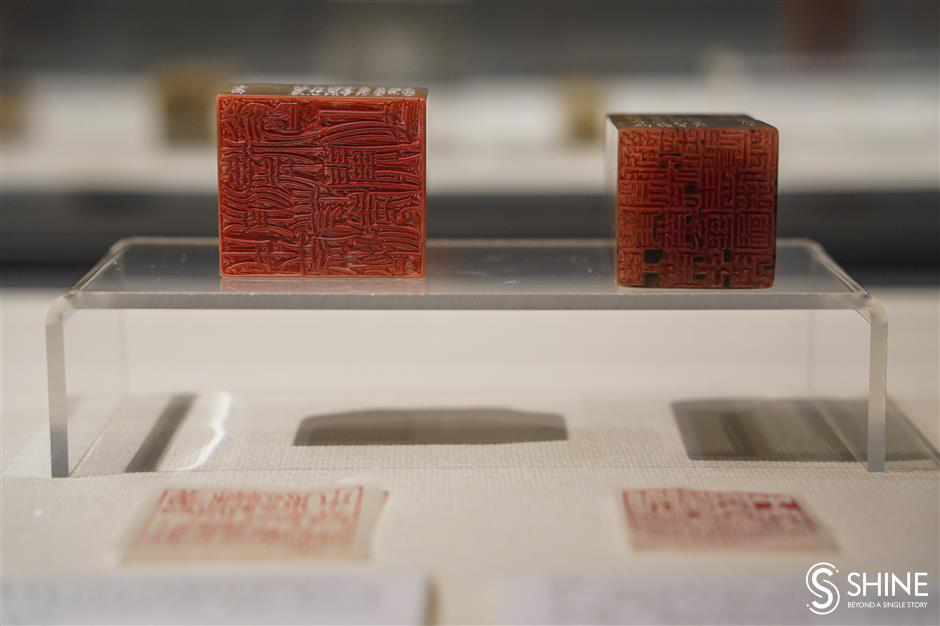
Century of struggles
An exhibition combining seal art and "red" stories has opened at the Sihang Warehouse Battle Memorial. The exhibition features a "red sea" of 100 photos of seals and stamps, with powerful overtones of a century of the Communist Party of China's struggles and achievements. Also on display are seals carved with slogans such as "Long Live CPC." Admission to the exhibition is free, and it runs through October 8 on the third floor of the memorial.




 A single purchase
A single purchase








